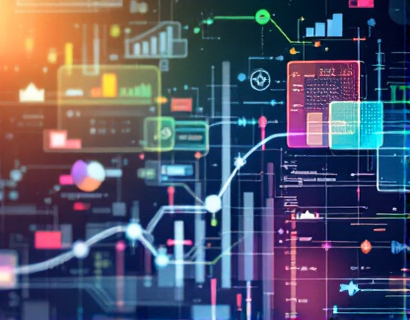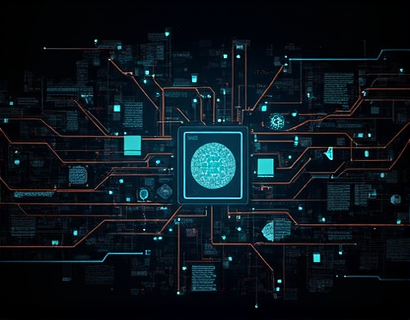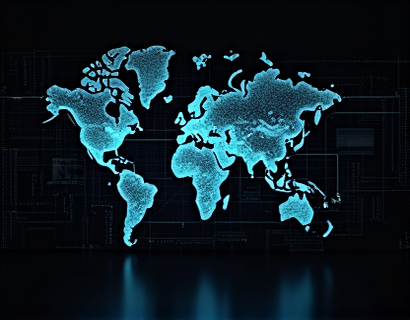AI-Driven Mental Health Insights: A Comprehensive Guide for Professionals, Students, and Families
The integration of artificial intelligence in mental health services has opened new avenues for providing specialized insights and support to a diverse audience. This article delves into the capabilities and benefits of an AI-driven chatbot designed to offer accurate and safe mental health information to professionals, students, and families. The focus is on creating a secure and engaging platform that caters to the unique needs of various user groups, including children, students, educators, and healthcare professionals.
Understanding the Need for AI in Mental Health
Mental health is a critical aspect of overall well-being, yet it remains a topic shrouded in stigma and misunderstanding. The demand for accessible, reliable, and personalized mental health resources is higher than ever. Traditional methods of seeking mental health support can be time-consuming and often fail to provide the immediate, tailored assistance individuals need. AI-driven solutions, particularly chatbots, bridge this gap by offering real-time, specialized insights and support.
Features of an AI-Driven Mental Health Chatbot
An AI-driven chatbot for mental health services is equipped with advanced natural language processing (NLP) capabilities, enabling it to understand and respond to user queries with precision. This chatbot is designed to provide information on a wide range of topics, from understanding mental health conditions to navigating available treatment options and resources.
Specialized Information for Professionals
For healthcare professionals, the chatbot serves as a valuable resource for staying updated on the latest industry trends, research findings, and best practices. It can offer detailed insights into various mental health disorders, treatment methodologies, and emerging therapies. Professionals can also use the chatbot to find specialized training programs, certification courses, and networking opportunities.
Resources for Students and Young Adults
Students and young adults face unique mental health challenges, often related to academic pressure, social dynamics, and transition periods. The chatbot provides age-appropriate information on common mental health issues such as anxiety, depression, and stress management. It also offers guidance on where to seek help on campus, local resources, and self-care strategies tailored to their needs.
Engaging and Educational Content for Families
Families play a crucial role in supporting mental health. The chatbot offers educational content that helps parents and caregivers understand mental health conditions, recognize signs of distress in children, and learn effective communication strategies. It provides tips on creating a supportive home environment and suggests activities that promote mental well-being for the entire family.
Ensuring Content Verification and Safety
One of the primary concerns when using AI for mental health is ensuring the accuracy and safety of the information provided. To address this, the chatbot incorporates a robust content verification system. All information is cross-referenced with credible sources, including peer-reviewed journals, official health organization guidelines, and expert opinions. This multi-layered verification process ensures that users receive reliable and up-to-date content.
For younger users, the chatbot includes a child-friendly version that filters content to be age-appropriate and safe. This version is designed in collaboration with child psychologists and educators to ensure it meets the developmental and emotional needs of children and students. Parental controls and monitoring features are also available to enhance the safety of the platform.
Interactive and Personalized User Experience
The AI chatbot is designed to offer an interactive and personalized experience. Users can engage in natural conversations, asking questions and receiving tailored responses based on their specific concerns or interests. The chatbot uses machine learning algorithms to learn from user interactions, continuously improving its responses and recommendations over time.
For professionals, the chatbot can suggest personalized professional development paths based on their interests and career goals. Students can receive customized study materials and mental health tips based on their academic schedule and personal well-being. Families can access tailored resources and activities that suit their unique dynamics and needs.
Building Trust and Credibility
Trust is paramount in mental health discussions. To build credibility, the chatbot clearly indicates when it is providing general information and when it is suggesting specific resources or actions. It also provides references to the sources of its information, allowing users to verify the content independently. This transparency helps users feel more confident in the advice and resources provided.
Collaboration with mental health experts and organizations is another key aspect of building trust. The chatbot's content and recommendations are reviewed and endorsed by professionals in the field, ensuring that users receive high-quality, evidence-based information.
Supporting Diverse User Needs
The chatbot is designed to cater to a wide range of user needs and backgrounds. It supports multiple languages to make mental health resources accessible to a global audience. Cultural sensitivity is also a priority, with the chatbot providing culturally relevant examples and advice to ensure inclusivity.
For individuals with specific mental health conditions, the chatbot offers targeted support and resources. It can guide users to specialized support groups, online therapy sessions, and local community services. The chatbot also provides information on how to create a supportive environment for those living with mental health conditions, fostering understanding and empathy within families and communities.
Promoting Mental Health Awareness and Education
Beyond providing direct support, the AI chatbot plays a significant role in promoting mental health awareness and education. It can share informative articles, infographics, and videos on various mental health topics, helping to break down stigmas and misconceptions. The chatbot encourages users to prioritize their mental well-being and seek help when needed.
For educators, the chatbot offers resources to integrate mental health education into school curricula. It provides lesson plans, activity ideas, and discussion prompts that align with educational standards while promoting mental health literacy among students.
Conclusion
The integration of AI in mental health services through specialized chatbots represents a significant advancement in providing accessible, accurate, and safe mental health support. By offering tailored insights and resources to professionals, students, families, and children, these chatbots help bridge the gap in mental health care. As technology continues to evolve, the potential for AI to positively impact mental health outcomes is immense, making it an essential tool in the ongoing effort to support and enhance mental well-being.










































